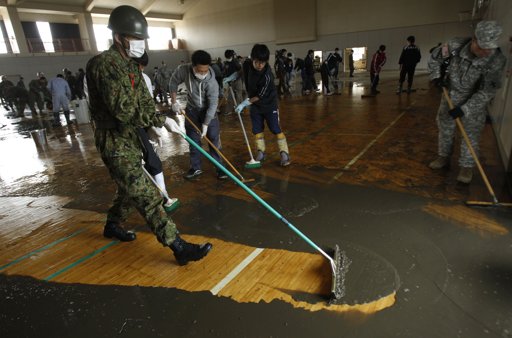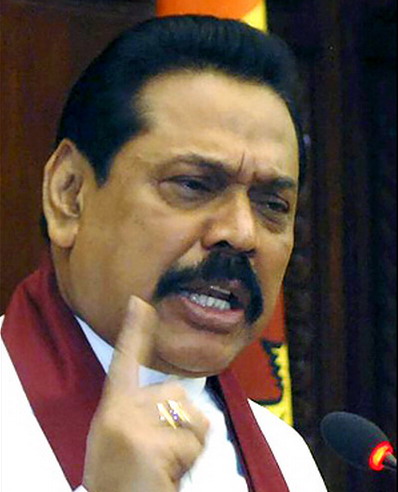Lessons from Japan: Sri Lanka must move towards a positive peace
“The peace museums in Japan remind the present generation of mistakes that must not be repeated, and of suffering that must not happen again. I saw hundreds of school children come every day to those museums along with their school teachers”
When the war ended in May 2009, it was the worst that was over, but the ethnic conflict that spans more than five
decades is not yet over. The ethnic polarization in the first years after Independence was on account of citizenship and language. Impatient and angry at the failure of the Tamil democratic leaders to obtain reform from the Sri Lankan State, young Tamil militants took to arms in the mid 1970s. The ethnic conflict took the fateful path of violence and increased polarization. This was seen most markedly in the last battles between the Sri Lankan military and the LTTE. There was a near total polarization in the ethnic compositions of the two fighting forces. This polarization is to be seen today as well in the divergent opinions being expressed by members of the different ethnic communities about the end of the war.
Today the government, which won the war according to the deadline of three years that they set, has the challenge of promoting reconciliation and lasting peace in Sri Lanka without delay. Given the shortage of resources, the government needs to obtain international support in providing for the displaced persons and victims of war and in taking the country onto a fast track of economic development. The government also has to cope with the international demands for accountability and fact finding regarding the last phase of the war. The government is well situated to deliver political reform as it has a 2/3 majority in Parliament and continues to enjoy strong public support.
End result of military action to quell popular agitation, is war
However, instead of promoting political reform that addresses the roots of the conflict and provides for post-war de-militarisation, the government has been more focused on national security through military strength. One of the most unexpected outcomes of the end of the war was the government’s decision to continue to increase the military budget and further increase recruitment to the armed forces. However, the lessons of the past suggest that the government will be making a mistake if it believes that it can utilize the military resources at its disposal to control popular agitation that might arise in the future due to political discontent. In the 1960s and late 1970s as well, previous governments sent in military forces to quell public unrest in the Tamil areas. Although initially the military action seemed to get rid of the problem, the end result was terrorism and war.
HEALING WOUNDS
After a protracted and very costly war as occurred in Sri Lanka it is absolutely necessary to start with political
reconciliation between the different ethnic communities and also between the government and the minorities and not to repeat the mistakes of the past. This is why the forthcoming report of the Lessons Learnt and Reconciliation Commission appointed by President Mahinda Rajapaksa is going to be very important. Inter ethnic reconciliation is a pre-condition to strengthen social relationships and economic development. It is not easy to heal the wounds of war inflicted on the people especially the loss of lives caused during the war. This cannot be achieved unless there is healing action among the people of different communities, the government and political parties. The political and civil society leaderships need to consciously undertake to change the systems and patterns of thought that existed during war and work towards an era of peace and justice in Sri Lanka.
Positive peace
Positive peace is where there is reconciliation, a change of heart, and a change of political structures that gave rise to war. In this respect Sri Lanka has to move forward to positive peace. At the present time, the Tamil people continue to vote against the government. At nearly every election after the war, they have voted against the government. The government in turn is increasing the size of the military budget even though the war has ended. There is continued military domination of the north and east where Tamil people live and where the thirty year war was fought. Sri Lanka needs reconciliation between the government and Tamil people. We are in danger of failing to resolve the root causes of our war and recreating conflict once again.
Recently I had the opportunity to visit Japan, which is one of the most peaceful and socially cohesive countries in the world. This was not always the case. Among the places I visited was Okinawa in the south of Japan, where the battle to enter Japan was fought by American troops. Over 120,000 civilians died in that battle, or about a third of the population of Okinawa. Nagasaki and Hiroshima suffered atomic bomb attacks which killed more than 75,000 and 150,000 in the two cities, most of them civilians, a large number being children. At the peace memorial museum in Okinawa, and also in Hiroshima and Nagasaki, I saw a lesson that Japan can offer to Sri Lanka. Those museums are designed to heal wounds and not to make them worse. In Okinawa I saw the photographs of all the 200 children who were compulsorily recruited to the student medical unit of the Japanese army. Most of them were killed in the fighting, although they never killed or harmed anyone.
They reminded me of the children forcibly recruited by the LTTE and who died in confrontation with the Sri Lanka military. One such tragic incident during the closing stages of the war was in regard to high school girls who were taken by the LTTE to Sencholai orphanage in Kilinochchi to be trained in medical care. They were children from the best schools in the area and from families that did not dream of having their girls go off to war. It was believed by the government that they would also be given arms training eventually. The orphanage where the children were being trained by the LTTE was bombed by the air force with over 60 girls being killed.
PEACE MUSEUMS
The peace museums in Japan remind the present generation of mistakes that must not be repeated, and of suffering that must not happen again. I saw hundreds of school children come every day to those museums along with their school teachers. They come to learn about a peace culture in which violence has no place. There is a case to be made for peace museums to be set up in Sri Lanka that provides a peace culture to the people. It will be harder for us today in Sri Lanka, than it is now for Japanese. Our war is only over 2 and half years, and so the wounds of war are raw. Peace culture requires a non-partisan approach that is not the tool for one-sided propaganda. This is where multi ethnic civil society groups can play an important role in establishing peace museums and promoting peace culture.
There are also other examples of best practices we can take from Asia. In Vietnam, there was also a war between the North and South, but today there is reconciliation and a Prime Minister who comes from the defeated South. In Indonesia, there was separatist war in Aceh that has ended with a peace settlement and autonomy. In the Philippines the involvement of civil society in local government has been formalized in the law. In Pakistan, there is a strong civil society movement, led by lawyers and journalists, that has done much to change a dictatorship into a democracy. In China, the abuse of power by government officials is increasingly being challenged by ordinary citizens who use the internet to inform each other and to protest.
Today, unfortunately, Sri Lankan civil society is facing a challenging situation. Their links with foreign donors is suspected to influence their activities in unpatriotic ways. Only a few weeks ago many news websites were shut down by the government. This has restricted the space for alternative sources of information to the general public. Even though the government won the war against the LTTE over two years ago, it feels itself to be under continued threat from hostile forces. With its ability to control the state apparatus, especially the media, the government has an overwhelming power to shape public opinion relative to civil society groups. Until the vicious cycle of insecurity and repression end, and goodwill and trust prevail, the division in Sri Lanka will continue to grow. The only assurance we have is that all cycles come to an end, hopefully through change of heart.



April 2, 2012 at 4:09 pm
that you were departing Sri Lanka rsyteeday, but then it looked like you were still there staying on a bit more Does this mean that you will be joining the Gallena Aranya ancient caves monastery for a longer time? With loving kindness to All